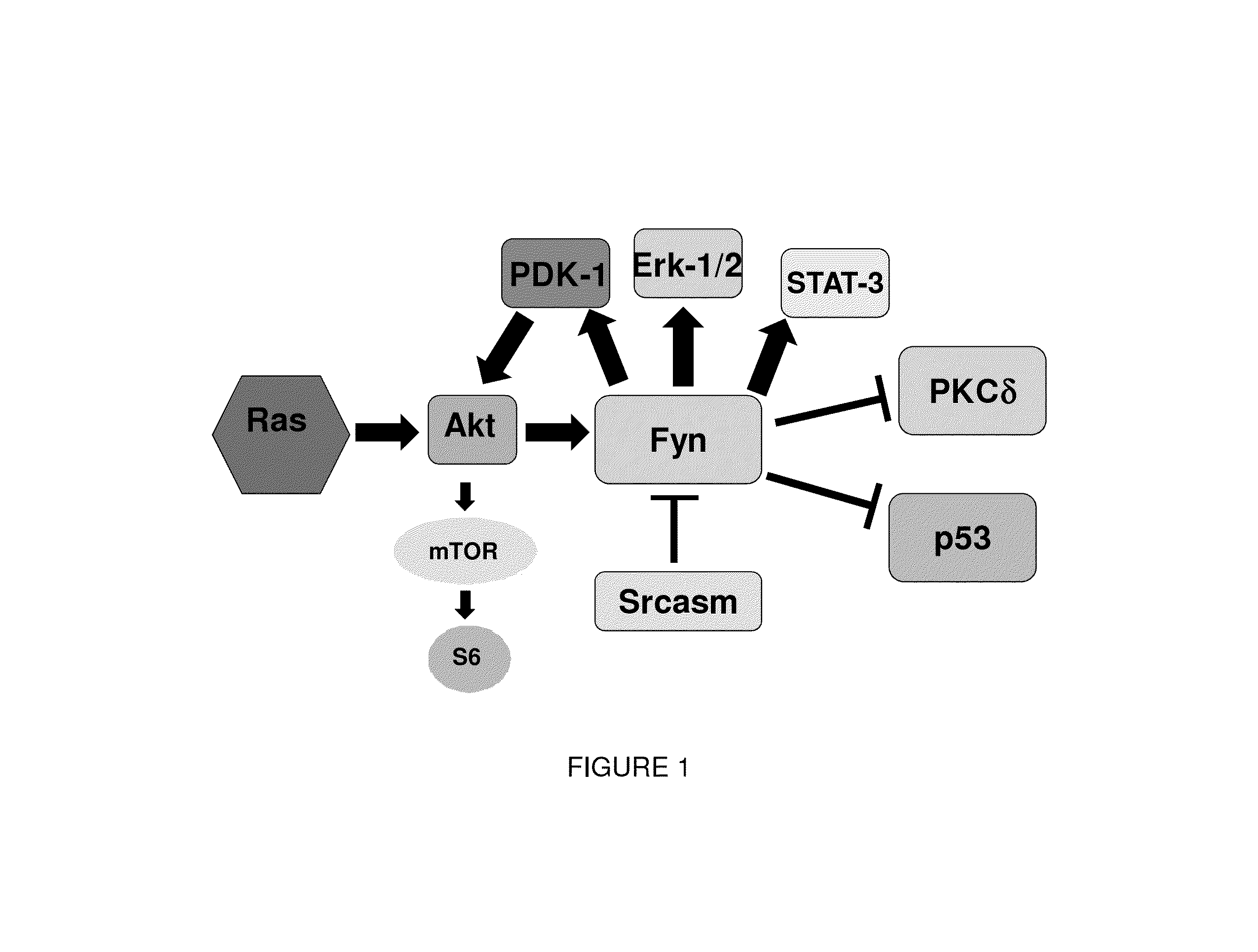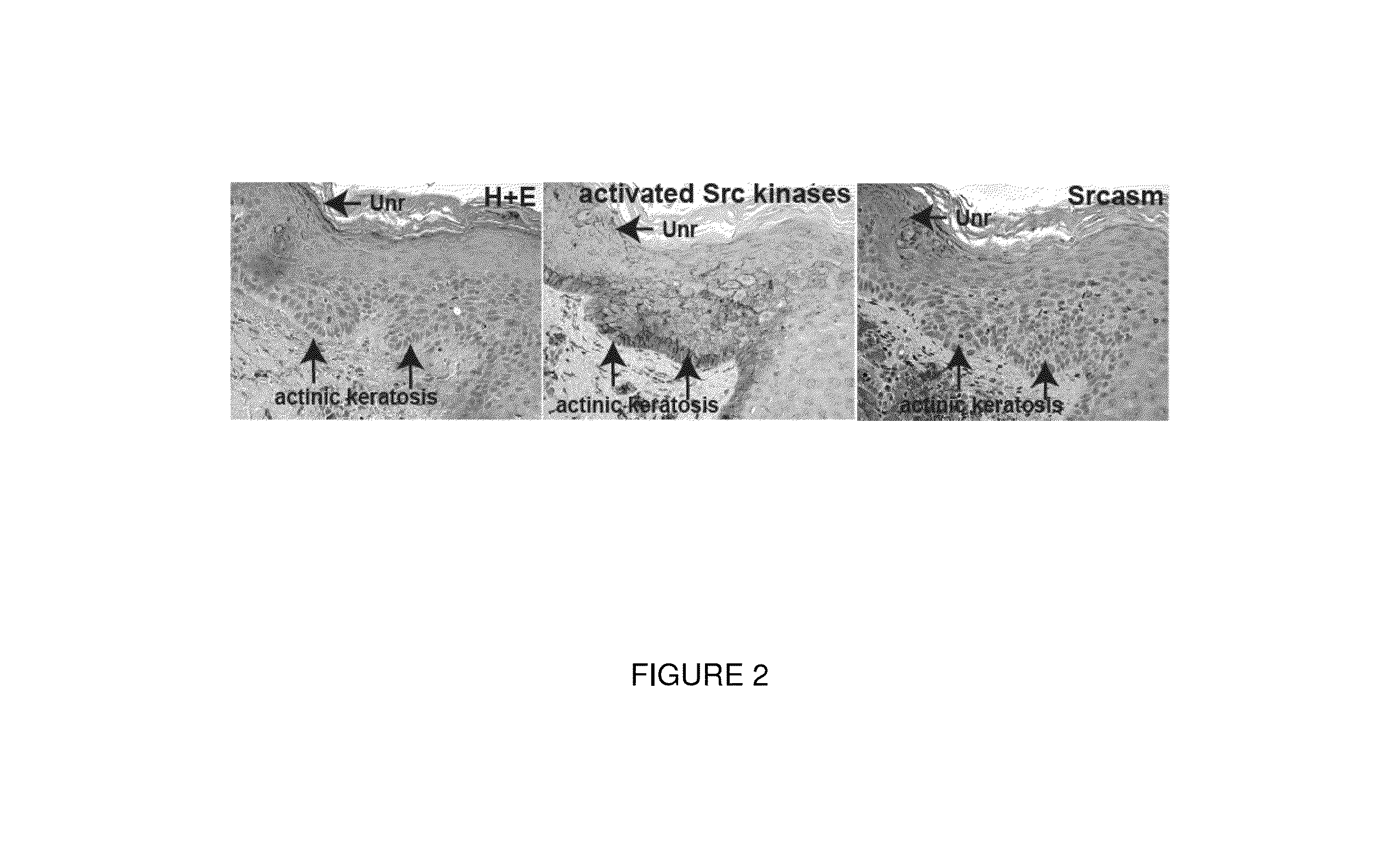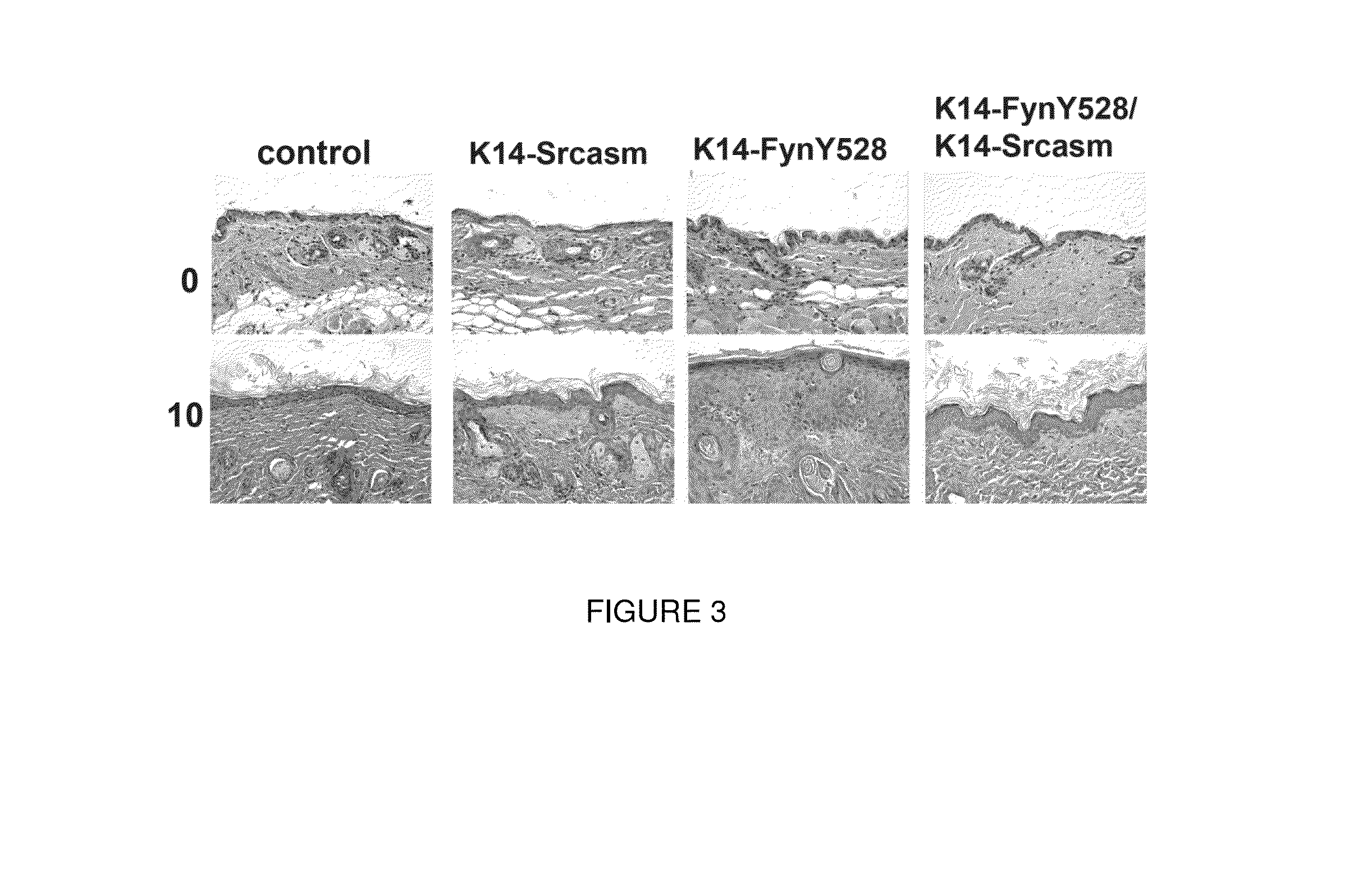Compositions and methods for treating skin cancer associated diseases
a technology for skin cancer and associated diseases, applied in the field of compositions and methods for treating skin cancer associated diseases, can solve the problems of adverse effects, pain, stinging, and affecting the quality of life of patients, and achieve the effects of improving the quality of life of patients, reducing the quality of life of patients, and improving the quality of li
- Summary
- Abstract
- Description
- Claims
- Application Information
AI Technical Summary
Benefits of technology
Problems solved by technology
Method used
Image
Examples
example 1
Src-Family Tyrosine Kinases are Drivers of Cutaneous Neoplasia and UVB Responses in Keratinocytes, while Srcasm, a Negative Regulator of SFKs, is a Tumor Supressor
[0107]Src-family tyrosine kinases (SFKs) were the first oncogenes identified, and they play central roles in promoting neoplasia in most tissues. SFKs are downstream effectors of EGFR and activate the Ras-Mek-Erk pathway in human keratinocytes. In contrast with Src, Fyn is prominently acylated on its N-terminus and localizes to lipid rafts, which are important membrane subdomains for receptor tyrosine kinase signaling. Fyn plays a major role in keratinocyte biology as lipid rafts are critical for EGFR signaling. Increased EGFR activity has been seen in a variety of human epidermal cancers including actinic keratoses, squamous cell carcinoma, and Bowen' s disease.
[0108]Serial sections from 17 human AKs were analyzed for activated SFKs and Srcasm levels Immunohistochemistry demonstrated elevated SFK activity and decreased Sr...
example 2
Effect of Small Molecule Kinase Inhibitors on Precursor Lesions and Tumors in Mice
[0113]As discussed in the previous example, K14-Fyn Y528F mice represent a robust model of cutaneous carcinogenesis which yields lesions that mimic human precancerous lesions; this model presents a unique in vivo screening tool to test the topical efficacy of small molecule kinase inhibitors in preventing the formation of precancerous lesions and cutaneous SCCs.
[0114]The phenotype of K14-Fyn Y528F transgenic mice yields precancerous lesions and cutaneous SCCs that resemble their human counterparts at the clinical, histologic, and molecular levels. Characterization of the K14-Fyn Y528F model demonstrates that the formation of precancerous and cSCC lesions is directly dependent on an elevated level of activated SFKs in keratinocytes.
[0115]Given the robust phenotype of the K14-Fyn Y528F mice, this transgenic line represents an excellent, physiologically relevant in vivo model for testing the efficacy of t...
example 3
Topical Application of the Small Molecule Tyrosine Kinase Inhibitor PP2 Induces Clearance of cSCCs, Clearance of Precancerous Lesion, and Tumor Regression in Mice
[0130]To determine the effects of topical application of tyrosine kinase inhibitors, PP2 was applied topically to a cohort of five K14-Fyn Y528F mice with a total of 11 cSCCs. PP2 is a well characterized inhibitor of Src-family tyrosine kinases with a molecular weight of 301.8 daltons; therefore, this compound is smaller than 500 daltons, which is the molecular weight cut-off for penetrating the skin efficiently. Tumors received approximately 25 μL of 1 mM (a 0.03% solution) PP2 daily for 30 days (Monday thru Friday) and were evaluated by photography before initiating treatment and every Friday for 6 weeks. As a control, a cohort of 4 mice with 9 cSCCs was treated analogously with PP3, an inactive PP2 analog. The cSCCs represent keratotic tumors larger than 3 x 3 mm (as measured by calipers). All PP2 treated tumors (N=11) d...
PUM
| Property | Measurement | Unit |
|---|---|---|
| Mass | aaaaa | aaaaa |
| Molecular weight | aaaaa | aaaaa |
Abstract
Description
Claims
Application Information
 Login to View More
Login to View More - R&D
- Intellectual Property
- Life Sciences
- Materials
- Tech Scout
- Unparalleled Data Quality
- Higher Quality Content
- 60% Fewer Hallucinations
Browse by: Latest US Patents, China's latest patents, Technical Efficacy Thesaurus, Application Domain, Technology Topic, Popular Technical Reports.
© 2025 PatSnap. All rights reserved.Legal|Privacy policy|Modern Slavery Act Transparency Statement|Sitemap|About US| Contact US: help@patsnap.com



